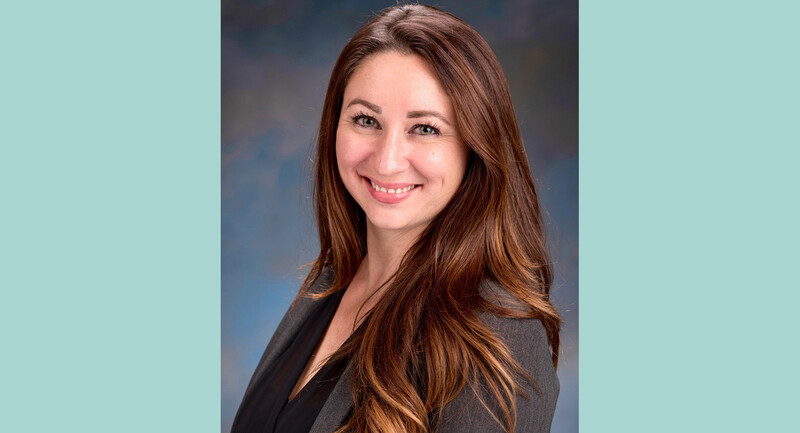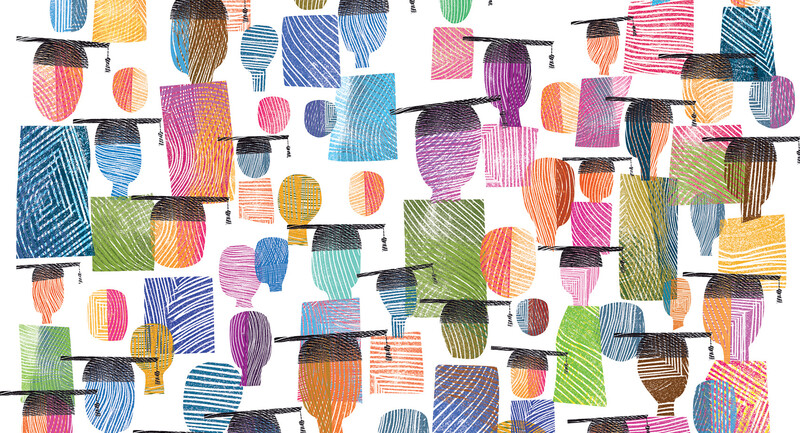This is an exciting time for education as the federal government, state houses, and private philanthropies are all focusing on school reform. A lot of good ideas are in the air—thoughtful proposals for ways to change things, to imagine a new kind of schooling in the United States.
The history of school reform has taught us, however, that good ideas can become one-dimensionalized as they move from conception through policy formation to implementation. Also, in the heat of reform, politics and polemics can become an end in themselves, a runaway train of reform for reform's sake. In addition, reforms can have unintended consequences. As a reform plays out in the complex, on-the-ground world of districts, school boards, and classrooms, it can lead to counter productive practices. In the case of No Child Left Behind, for example, we saw the narrowing of the curriculum to prepare for high-stakes tests in math and language arts.
At this moment, when we're focusing so much attention on school reform and so much is possible, it would be good to step back and remind ourselves what we're ultimately trying to achieve. What is the goal of school reform? Most would agree it's to create rich learning environments, ones with greater scope and more equitable distribution than those we currently have.
As we reimagine school, some basic questions should serve as our touchstone for reform: What is the purpose of education in a democracy? What kind of people do we want to see emerge from U.S. schools? What is the experience of education when we do it well?
Happy as a Crab
One example of good teaching I saw comes from my book Possible Lives: The Promise of Public Education in America (Penguin, 1995/2006), an account of my travels across the United States to document effective public education. This 1st grade classroom in inner-city Baltimore has 30 students, all from modest to low-income households—the kinds of kids at the center of many school reforms.
As we enter the classroom, teacher Stephanie Terry is reading a book to her students, Eric Carle's A House for Hermit Crab (Simon and Schuster, 1991). Hermit crabs inhabit empty mollusk shells; as they grow, they leave their old shells to find bigger ones. In this story, a cheery hermit crab is searching for a more spacious home.
There's a glass case in the classroom with five hermit crabs—which Stephanie supplied—and 13 shells of various sizes. More than once during the year, students have noticed that a shell had been abandoned and that a larger one had suddenly become animated. As Stephanie reads the book, she pauses and raises broader questions about where the creatures live. This leads to an eager query from Kenneth about where in nature you'd find hermit crabs. "Well," says Stephanie, "let's see if we can figure that out."
She gets up and brings the case with the hermit crabs to the center of the room, takes the crabs out, and places them on the rug. One scuttles away from the group; another moves in a brief half circle; three stay put. While this is going on, Stephanie takes two plastic tubs from the cupboard above the sink and fills one with cold water from the tap and the other with warm water. Then she places both tubs side by side and asks five students, one by one, to put each of the crabs in the cold water. "What happens?" she asks. "They don't move," says Kenneth. "They stay inside their shells," adds Miko.
Stephanie then asks five other students to transfer the crabs to the tub of warm water. They do, and within seconds the crabs start to stir. Before long, the crabs are moving like crazy. "OK," says Stephanie. "What happens in the warmer water?" An excited chorus of students replies, "They're moving! They're walking all over! They like it! They're happy like the crab in the book!" "So what does this suggest about where they like to live?" asks Stephanie.
That night, the students write about the experiment. Many are just learning to write, but Stephanie told them to write down their observations as best as they could, and that she would help them develop what they write. The next day, the students take turns standing in front of the class reading their reports.
Miko goes first: "I saw the hermit crab walking when it was in the warm water, but when it was in the cold water, it was not walking. It likes to live in warm water."
Then Romarise takes the floor, holding his paper way out in his right hand, his left hand in the pocket of his overalls: "(1) I observed two legs in the back of the shell; (2) I observed that some of the crabs change [their] shell; (3) When the hermit crabs went into the cold water, they walked slow; (4) When the hermit crabs went into the warm water, they walked faster."
One by one, the rest of the students state their observations, halting at times as they try to figure out what they wrote, sometimes losing track and repeating themselves. But in a soft or loud voice, with a quiet sense of assurance or an unsteady eagerness, these 1st graders report on the behavior of the classroom's hermit crabs, which have now become the focus of their attention.
There's a lot to say about Stephanie's modest but richly stocked classroom and the skillful way she interacts with the children in it. But I'll focus on two important points: what Stephanie demonstrates about the craft and art of teaching and the experience of learning that she generates for her class.
Growing Good Teachers
Everyone in the current reform environment acknowledges the importance of good teaching. But most characterizations of teaching miss the richness and complexity of the work. The teacher often becomes a knowledge-delivery mechanism preparing students for high-stakes tests.
Moreover, reform initiatives lack depth on how to develop more good teachers. There is encouragement of alternative pathways to qualification (and, often, animosity toward schools of education and traditional teacher training). There are calls for merit pay, with pay typically linked to test-score evidence of student achievement. There are general calls for additional professional development. And, of course, there is the widespread negative incentive: By holding teachers' "feet to the fire" of test scores, we will supposedly get more effort from teachers, although proponents of this point of view never articulate the social-psychological mechanisms by which the use of test scores will affect effort, motivation, and pedagogical skill.
But when you watch Stephanie, a very different image of the teacher emerges. She is knowledgeable and resourceful across multiple subject areas and is skillful at integrating them. She is spontaneous, alert for the teachable moment, and able to play out the fruits of that spontaneity and plan next steps incrementally as the activity unfolds. She believes that her students can handle a sophisticated assignment, and she asks questions and gives direction to guide them. Her students seem comfortable taking up the intellectual challenge.
What is interesting is that none of the current high-profile reform ideas would explain or significantly enhance Stephanie's expertise. Merit pay doesn't inspire her inventiveness; it doesn't exist in her district (although she would be happy to have the extra money, given that she furnished some classroom resources from her own pocket). Standardized test scores don't motivate her either. In fact, the typical test would be unable to capture some of the intellectual display I witnessed in her classroom. What motivates her is a complex mix of personal values and a drive for competence. These lead her to treat her students in certain ways and to continue to improve her skill.
A Human Capital Model
Some professional development programs are particularly good at capitalizing on such motivators. Several years earlier, Stephanie participated in a National Science Foundation workshop aimed at integrating science into the elementary school classroom. Teachers met for several weeks during the summer at the Baltimore campus of the University of Maryland, one of several regional training sites around the United States.
The teachers were, in Stephanie's words, "immersed in science"; they were reading, writing, observing presentations, and doing science themselves—all with an eye toward integrating science into their elementary school curriculums. The summer workshop extended through the year, as participating teachers observed one another's classrooms and came together on selected weekends to report on how they were incorporating science into teaching and give presentations themselves. "It gave us a different way," said Stephanie, "to think about science, teaching, and kids."
Because we are in the reimagining mode here, let me offer this: What if we could channel the financial and human resources spent on the vast machinery of high-stakes testing into a robust, widely distributed program of professional development? I don't mean the quick-hit, half-day events that so often pass for professional development, but serious, extended engagement of the kind that the National Science Foundation and the National Writing Project might offer—the sort of program that helped Stephanie conjure her rich lesson with the hermit crabs.
These programs typically take place in the summer (the National Writing Project runs for four weeks), although there are other options, including ones that extend through part of the school year. Teachers work with subject-matter experts; read, write, and think together; learn new material; hear from others who have successfully integrated the material into their classrooms: and try it out themselves.
Electronic media can be hugely helpful here, creating innovative ways for teachers to participate, bringing in people from remote areas, and further enabling all participants to regularly check in as they try new things. Such ongoing participation would be crucial in building on the intellectual community created during this kind of teacher enrichment program. All of this already exists, but we could expand it significantly if policymakers and reformers took into account this richer understanding of the teaching profession.
Although pragmatic lifestyle issues certainly come into play in choosing any profession, the majority of people who enter teaching do so for fairly altruistic reasons. They like working with kids. They like science, literature, or history and want to spark that appreciation in others. They see inequality and want to make a difference in young people's lives.
The kind of professional development I'm describing would appeal to those motives, revitalize them, and further realize them as a teacher's career progresses. Enriched, widely available professional development would substitute a human capital model of school reform for the current test-based technocratic one. And because such professional development would positively affect what teachers teach and how they teach it, it would have a more direct effect on student achievement.
Learning-Friendly Environments
- Safety. The classrooms I visited created a sense of safety. There was physical safety, which for children in some locations is a serious consideration. But there was also safety from insult and diminishment. And there was safety to take risks, to push beyond what you can comfortably do at present—"coaxing our thinking along," as one student put it.
- Respect. Intimately related to safety is respect, a word I heard frequently during my travels. It means many things and operates on many levels: fair treatment, decency, an absence of intimidation, and beyond the realm of individual civility, a respect for the history, language, and culture of the people represented in the classroom. Respect also has an intellectual dimension. As one principal put it, "It's not just about being polite—even the curriculum has to convey respect. [It] has to be challenging enough that it's respectful."
- Student responsibility for learning. Even in classrooms that were run in a relatively traditional manner, students contributed to the flow of events, shaped the direction of discussion, and became authorities on their own experience and on the work they were doing. Think of Stephanie's students observing closely, recording what they saw, forming hypotheses, and reporting publically on their thinking. These classrooms were places of expectation and responsibility.
- Intellectual rigor. Teachers took students seriously as intellectual and social beings. Young people had to work hard, think things through, come to terms with one another—and there were times when such effort took students to their limits. "They looked at us in disbelief," said one New York principal, "when we told them they were intellectuals."
- Ongoing support. It is important to note that teachers realized such assumptions through a range of supports, guides, and structures: from the way they organized curriculum and invited and answered questions, to the means of assistance they and their aides provided (tutoring, conferences, written and oral feedback), to the various ways they encouraged peer support and assistance, to the atmosphere they created in the classroom—which takes us back to considerations of safety and respect.
- Concern for students' welfare. The students I talked to, from primary-grade children to graduating seniors, had the sense that these classrooms were salutary places—places that felt good to be in and that honored their best interests. They experienced this concern in various ways—as nurturance, social cohesion, the fostering of competence, recognition of growth, and a feeling of opportunity.
The foregoing characteristics made the rooms I visited feel alive. People were learning things, both cognitive and social; they were doing things, individually and collectively—making contributions, connecting ideas, and generating knowledge. To be sure, not everyone was engaged. And everyone, students and teachers, had bad days. But overall, these classrooms were exciting places to be—places of reflection and challenge, of deliberation and expression, of quiet work and public presentation. People were encouraged to be smart.
How directly do current reforms contribute to promoting such qualities?
The Most Important Question
In an important 18th-century essay on education, journalist Samuel Harrison Smith wrote that the free play of intelligence was central to a democracy and that individual intellectual growth was intimately connected to broad-scale intellectual development, to the "general diffusion of knowledge" across the republic.
As we consider what an altered school structure, increased technology, national standards, or other new reform initiatives might achieve, we should also ask the old, defining question, What is the purpose of education in a democracy? The formation of intellectually safe and respectful spaces, the distribution of authority and responsibility, the maintenance of high expectations and the means to attain them—all this is fundamentally democratic and prepares one for civic life. Teachers should regard students as capable and participatory beings, rich in both individual and social potential. The realization of that vision of the student is what finally should drive school reform in the United States.








